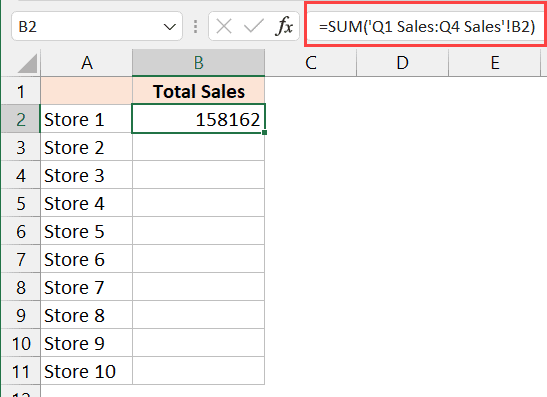How To Insert A Value In Excel From Another Sheet

If you've ever found yourself manually copying and pasting data from one Excel sheet to another, you know how time-consuming this task can be. Fortunately, Microsoft Excel offers several powerful functions to automate this process, making it easier and more efficient to manage your data. In this post, we'll explore how to insert a value from one Excel sheet into another, focusing on both straightforward methods and more advanced techniques.
Simple Copy and Paste

The simplest way to insert a value from one sheet to another in Excel is by using the traditional copy and paste functionality:
- Select the cell or range of cells you want to copy.
- Right-click and choose ‘Copy’, or press Ctrl+C on your keyboard.
- Switch to the destination sheet, click on the target cell, then press Ctrl+V or right-click and select ‘Paste’.
This method is intuitive but not optimal for scenarios where the data frequently changes or when you want real-time updates.
Using Formulas

For a more dynamic approach, Excel formulas can be used to reference cells from different sheets:
- =Sheet1!A1 - This formula will insert the value from cell A1 in ‘Sheet1’ into the cell where the formula is entered.
- To make this reference more manageable, especially with many sheets, use named ranges or the INDIRECT function.
Using Named Ranges

Define a named range in the source sheet:
- Select the cell or range you want to reference.
- Go to the ‘Formulas’ tab, click on ‘Define Name’, and give your range a name.
- In your target sheet, simply type in the name to pull the data.
Using INDIRECT

The INDIRECT function allows for even more flexibility by dynamically referencing different sheets:
- =INDIRECT(“‘Sheet”&A1&“!A1”) - Assuming A1 in the current sheet contains a number (e.g., 1 for ‘Sheet1’), this formula will pull data from A1 of that sheet.
💡 Note: INDIRECT can be volatile, which means Excel recalculates the formula whenever anything in the workbook changes, potentially impacting performance for large datasets.
Advanced Techniques

For users needing to manage complex data flows, here are some advanced techniques:
VLOOKUP or HLOOKUP

These functions are useful for finding data across sheets:
- =VLOOKUP(A2,Sheet1!A1:B10,2,FALSE) - Looks up the value in A2 of the current sheet in the first column of the specified range in ‘Sheet1’, and returns the value from the second column where there is an exact match.
Power Query

Power Query, part of Excel’s Power Tools, can merge data from multiple sheets automatically:
- Go to the ‘Data’ tab, select ‘Get Data’ > ‘From Other Sources’ > ‘From Table/Range’.
- Navigate to the source sheet, select your data, and load it.
- Transform and combine data as needed within Power Query Editor.
- Load the transformed data back into Excel for real-time updates.
Excel Macros (VBA)

VBA can automate repetitive tasks, like pulling data from sheets:
- Access the VBA editor via Alt+F11.
- Write a macro to handle the data transfer, using functions like
Worksheets(“Sheet1”).Range(“A1”).Valueto fetch data.
🔌 Note: Macros can significantly speed up your workflow but require a basic understanding of VBA scripting.
Data Validation

You can use data validation to create a dropdown list that dynamically pulls data from another sheet:
- Set up your list data on the source sheet.
- In the destination sheet, select the cell where you want the dropdown.
- Go to ‘Data’ > ‘Data Validation’ and choose ‘List’ as the validation criteria.
- Reference your source data range in the ‘Source’ field.
Through these methods, Excel users can enhance their productivity by managing data more efficiently. The choice between simple copy-paste, formulas, or advanced techniques like VBA depends on the complexity of your data management needs and your familiarity with Excel's capabilities.
Can Excel automatically update data from one sheet to another?

+
Yes, Excel can automatically update data using formulas, named ranges, or tools like Power Query and VBA macros. These methods ensure that data changes in one sheet are reflected in another in real-time.
What is the difference between VLOOKUP and HLOOKUP?

+
VLOOKUP searches for data vertically, down columns. HLOOKUP, on the other hand, searches horizontally across rows. Both require your lookup column/row to be in the first position of the specified range.
Is Power Query available in all versions of Excel?

+
Power Query is part of Excel's Power Tools suite, available in Excel 2016 and later versions for Windows. For Mac, Power Query functionality was introduced in Excel 2020. Earlier versions of Excel do not include this feature natively.
How can I avoid breaking my Excel links when moving sheets?

+
Use relative references in your formulas or named ranges. Also, VBA can be used to update links automatically when sheets are moved or renamed, ensuring continuity in your data references.
Can I use Excel to import data from other applications?
+Yes, Excel can import data from various sources like CSV files, web pages, databases, and more, using features like Power Query, Data > From Other Sources, or traditional data import methods.
In summary, mastering the techniques for inserting values from one Excel sheet to another significantly boosts your efficiency in handling data. Whether you opt for basic copy-paste, dynamic formulas, or delve into VBA or Power Query, Excel’s flexibility caters to a wide range of needs, from simple data management to complex automation. Remember to consider the scale and update frequency of your data when choosing the right method for your project. As you become more familiar with these methods, you’ll discover Excel’s potential for streamlining your workflow and making data manipulation a breeze.



